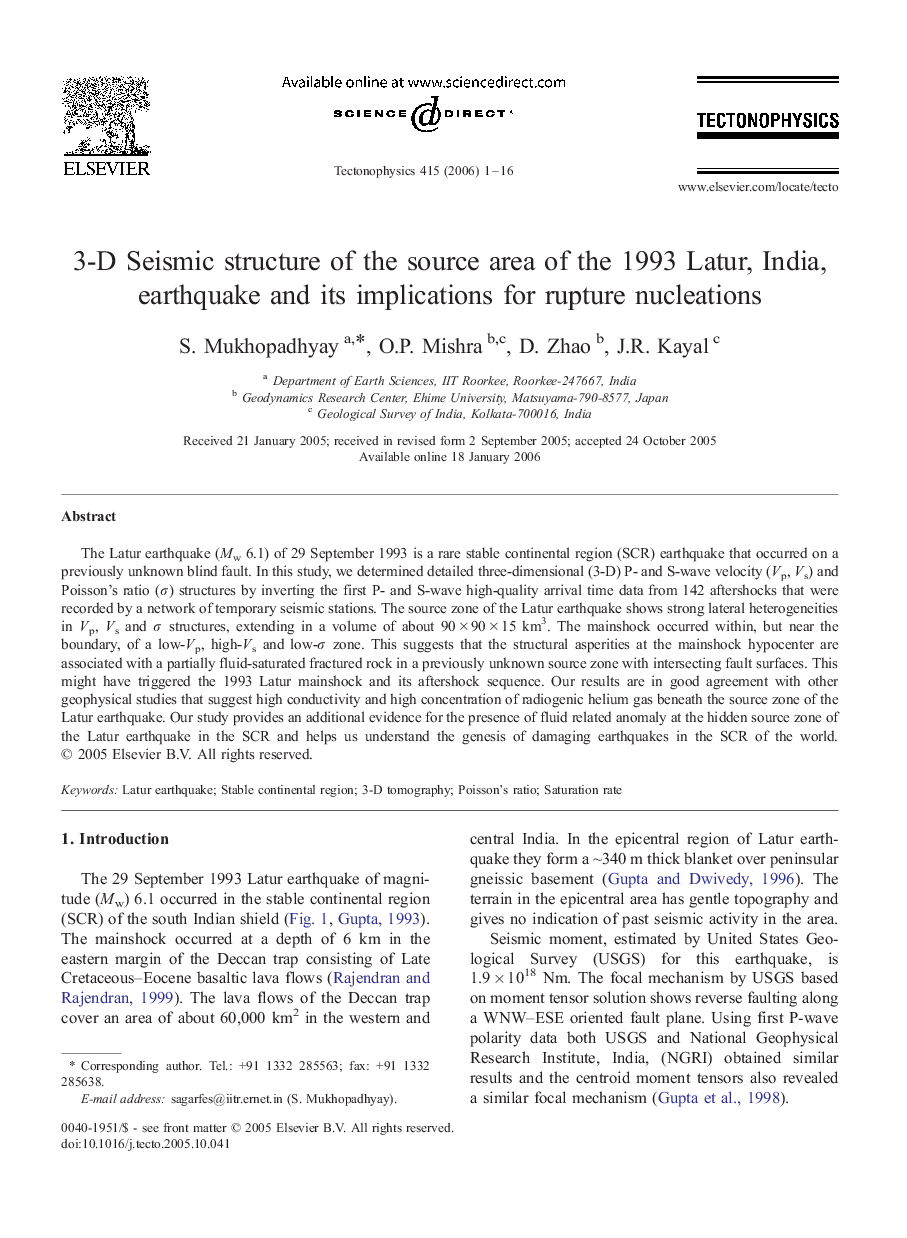| Article ID | Journal | Published Year | Pages | File Type |
|---|---|---|---|---|
| 4695241 | Tectonophysics | 2006 | 16 Pages |
The Latur earthquake (Mw 6.1) of 29 September 1993 is a rare stable continental region (SCR) earthquake that occurred on a previously unknown blind fault. In this study, we determined detailed three-dimensional (3-D) P- and S-wave velocity (Vp, Vs) and Poisson's ratio (σ) structures by inverting the first P- and S-wave high-quality arrival time data from 142 aftershocks that were recorded by a network of temporary seismic stations. The source zone of the Latur earthquake shows strong lateral heterogeneities in Vp, Vs and σ structures, extending in a volume of about 90 × 90 × 15 km3. The mainshock occurred within, but near the boundary, of a low-Vp, high-Vs and low-σ zone. This suggests that the structural asperities at the mainshock hypocenter are associated with a partially fluid-saturated fractured rock in a previously unknown source zone with intersecting fault surfaces. This might have triggered the 1993 Latur mainshock and its aftershock sequence. Our results are in good agreement with other geophysical studies that suggest high conductivity and high concentration of radiogenic helium gas beneath the source zone of the Latur earthquake. Our study provides an additional evidence for the presence of fluid related anomaly at the hidden source zone of the Latur earthquake in the SCR and helps us understand the genesis of damaging earthquakes in the SCR of the world.
